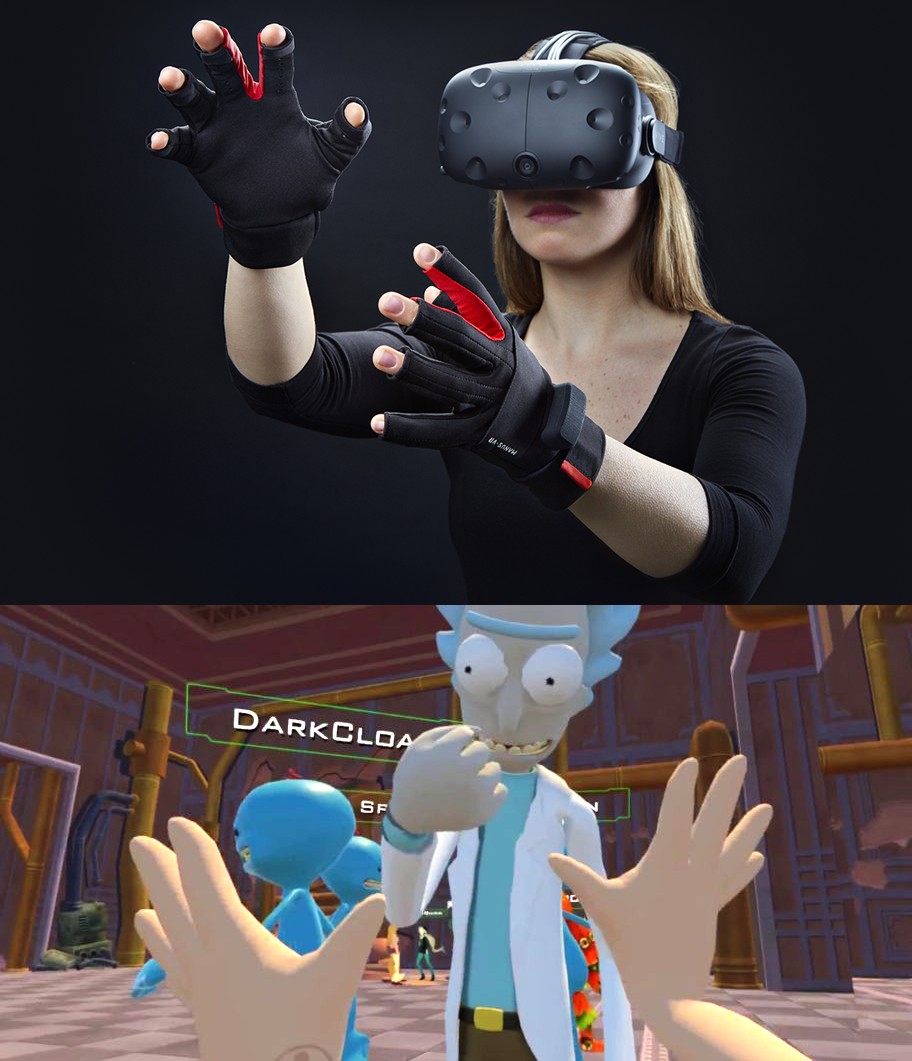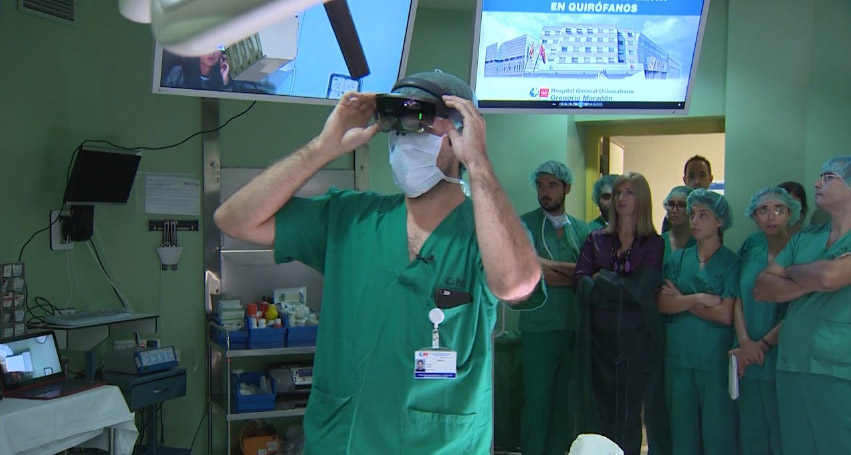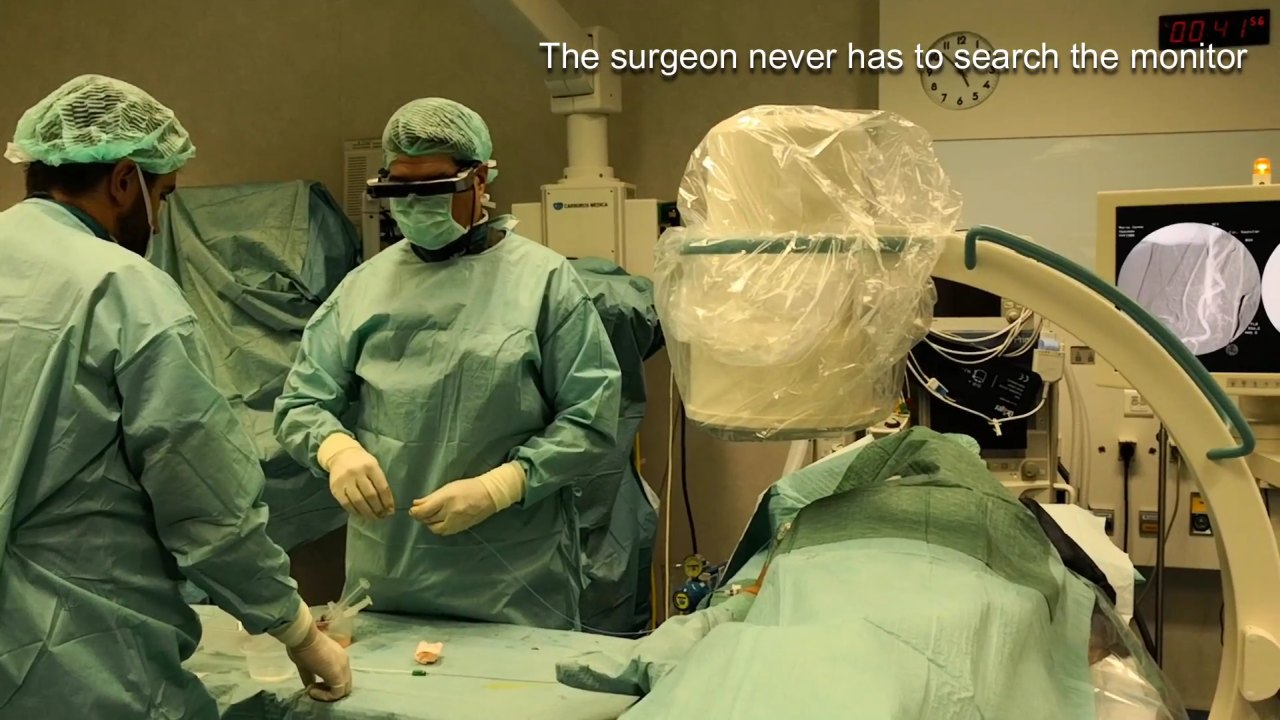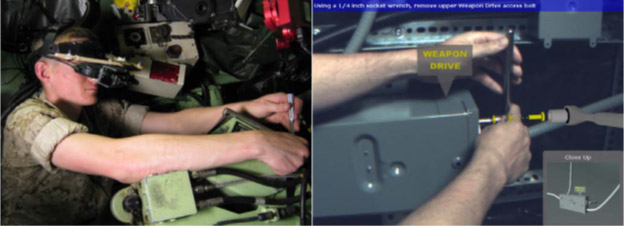AR glasses in the case. Real case studies on how augmented reality has been applied in various business areas.
Talking about Epson Moverio video glasses , we often come across skepticism (both in the comments and in the messages in the PM): “Your glasses are just an expensive toy. Well, or in the "Pokemon go" to play, unless " . Or, as one of our readers gracefully noted, - "jewelry whistle":

Therefore, having rummaged on the Internet, I decided to collect real cases from around the world, which show how such a device ( not necessarily Epson's production ) can be useful where you need to free your hands of employees, improve work efficiency and reduce the risk of "human error."
I tried to choose the most interesting projects from several areas: logistics, medicine, technical support, aircraft building and assistance to people with disabilities.

VR or AR?
Just in case, I'll start with the separation of the concepts of VR and AR. Both technologies pursue their goals and are suitable for different tasks.
The task of virtual reality is to transfer the user to a completely artificially created world. It is most often used for simulation projects and games. That is why the maximum immersion effect is felt in a special helmet, blocking most of the signals from the outside. VR can be stationary and mobile, including unusual gadgets like glasses with mirrors .

')
Augmented reality - it is easy to guess what it is about, if we recall the film "Iron Man". All the necessary indicators were displayed on the glass of Tony's helmet, while the display itself was transparent.

Let's summarize the main points in a simple table:
| VR | AR | |
| Devices | Helmet (+ smartphone), controller (+ trackers) | Smartphone, tablet, video glasses |
| Main stream | Games, simulations, skills training | Games, visual guides, visual inspection, equipment maintenance |
| Possibility of movement | Most stationary VR helmets have wires. They should be long enough not to restrict movement, and strong, because it is clear why. To move, additional adjustment is needed under the room parameters. Proper sensor placement, calibration and subsequent helmet settings are required. Mobile VR helmets are free from these problems, but you can crash into something. The situation changes for the better with the release of Oculus Quest and Rift S with integrated cameras. We carefully observe. | The displays are transparent points, so the user sees everything that happens around. However, in the instructions for our glasses, for example, it is written that it is prohibited to drive a car into them. Although, if you think about it, I would not have started driving the helmet in my helmet ... You need to keep a tablet or phone in front of your eyes, looking at the screen with a projection over the image from the camera. |
| Physical comfort | Many inconveniences, starting reluctance to spoil the hair, ending with the fact that many users under the mask sweats face. Eyes and neck are very tired from the prolonged wear of a VR helmet. I will not tell about the vertigo and shock of the vestibular apparatus when moving in the virtual space without moving in real life - those who have tried it know what it is like to experience such “motion sickness”. | AR-glasses are much easier, they are put on / off faster, in the latest releases of ours, for example, they are well attached, so they do not “fly off” from the head even with the strongest head tilts. Due to the fact that they are transparent, there is no “bue-e” effect when moving, because the real surrounding space is always before your eyes. This is one of the reasons, by the way, why AR is used in the professional environment, rather than helmets: you do not have to look for a person with a strong “vestibular” - almost anyone will cope. |
I will not delve into the description of the glasses themselves, they have already been told about them repeatedly. For example, here (Epson BT-200) , here (Epson BT-300) and here (Epson BT-35E) .
The two main types of AR use are “in action”
The first is a demonstration of information. The operator works with pre-installed manuals, clearly showing the process of assembling, disassembling, THEN something, or viewing the preloaded data, which literally should be before your eyes.
The second is remote support in emergency situations. In real-time, the remote technician sees the image from the built-in camera and sends interactive prompts and guides the user in his actions.
It is important to note that the capabilities of the application depend solely on software developed for a specific task. That is why all versions of Epson glasses, for example, have an open SDK.
We now turn to interesting cases on the main categories, but already tired, probably!
Logistics
A few years ago, DHL tested augmented reality at a warehouse in Bergen op Zom (The Netherlands) where smart glasses were given to employees. The points display showed the route to the product and only those products that needed to be collected in a specific order. The pilot project showed excellent results: logistics and the selection process became more efficient by 25%.
By the way, smart glasses with the function of augmented reality would be useful also in companies in whose warehouses are stored a huge number of unlike articles, or where they often hire temporary workers. In order to get comfortable and find out where and what time is needed, respectively, the use of such an “assistant” has great potential.

By the way, a great solution for the Post of Russia ...
ST Logistics and MGG Software have developed an application that provides such opportunities:
The medicine

In 2017, surgeons at the Spanish clinic Gregorio Marañon were the first in the world to use augmented reality glasses to perform an operation. The doctor could see the history of the disease, test data and patient monitor, X-rays, MRI, CT, as well as control these hand movements. The built-in camera recorded what was happening in the operating room and transmitted the video stream to the monitors to train the interns.
Another interesting case from the field of surgery is endovascular surgery in augmented reality video glasses ( video by reference , since for some reason imedia-diving on third-party resources is forbidden for him).

By the way, the operation was performed using Epson Moverio BT-35E , which we recently talked about in Habré .
Endovascular surgery is a relatively new, but very promising trend in modern medicine. Its main advantage is low invasiveness , when for access to complex anatomical structures or internal organs, only a small skin incision and insertion of a conductor through a vessel is sufficient.
Unfortunately, since the topic itself is completely non-core for me, it is difficult to comment. Perhaps habraeksperty help in the comments to the post.
Dentists, too, "in the subject"
Dentists keep up with colleagues and use augmented reality in everyday procedures. For example, with prosthetics. The doctor uses a special stick with an HD video camera to scan the area requiring prosthetics. Based on the scanned three-dimensional model of the prosthetist creates computer images of crowns and bridges.
The inconvenience of the process is that the image from the camera is transmitted to an external monitor, usually located on the side of the doctor (apparently, not all doctors have the opportunity to put it in front of his eyes): therefore, he needs to constantly turn to the patient during scanning, then to the screen . It is distracting and may cause certain inconveniences to the patient. EyeCad software displays the image from the scanner camera immediately to the display of glasses, so the doctor looks at the patient and sees the workspace. The developers also provided gesture control.
Another example - the ICNOS application - allows the patient to maintain communication with the doctor. If during treatment the patient needs to say something to the doctor, for example, that he needs a break, or ask how much time is left until the end of the procedure, he can do it using a special application that plays the specified text using a Bluetooth connection to the speaker. .
And, if the patient is bored, he can watch a new series of his favorite series or “surf” on the Internet.
Remote technical support and maintenance
Russian industrial giant SIBUR is developing an AR-based industrial platform based on augmented reality technology. According to the developers, the solution will allow the specialist to receive operational support during maintenance and repair from remotely located internal and external experts.

In their blog “Digital SIBUR” they tell in detail about the prospects and difficulties that they face when implementing a solution.
A staff at the Colombian University conducted a study to assess the benefits of augmented reality when servicing the armored personnel carrier turret (“ Evaluating the Armored Personnel Carrier Turret ”). It seems even successful.

Aircraft industry
The military-industrial corporation Lockheed Martin (USA), which manufactures aviation technology, has introduced augmented reality glasses with a specially developed application into its engineers' arsenal. With their help, the task of providing information support to specialists has been greatly simplified - in the process of assembling, the technician sees on the screen information about where and how to connect the necessary part. The company NGRAIN, which was engaged in the implementation of this equipment, calculated that thanks to this decision, workers spend 30% less time on tasks, and the accuracy of labor has increased by as much as 96%.

Help for people with disabilities
For hearing impaired people using AR devices, it is possible to visualize or convert audio information into text format. So in the Astrakhan Museum of Local History, a version of the excursion with sign translation is available.
And the National British Theater, together with an innovation partner, Accenture and StageText, developed a project in which Epson Moverio BT-350 video augmented reality glasses are used to output dialogs and sounds that are synchronized with the performances of the dialogues and points.
Technology Open Access Smart Capture uses speech recognition software and synchronizing titles with the text of the statement. For accurate calibration, the program reads the light, sound and video tags that are unique to each setting. Viewers can customize the font size, color and position of the titles at their discretion.
Experts continue to improve the project. Currently, software is being finalized so that glasses can be used to generate captions in real time.
For people with disabilities, augmented reality devices will be able to create information maps of an accessible environment, allow them to make convenient routes, to warn about difficult or difficult to reach places.
Instead of output
The examples that have been found are only a demonstration of a small part of the possibilities that augmented reality gadgets offer. Epson offers augmented reality video glasses , with the help of which it becomes possible to realize much of what was described in the post.
Perhaps you will find use for them in your next AR project?
Source: https://habr.com/ru/post/457444/
All Articles